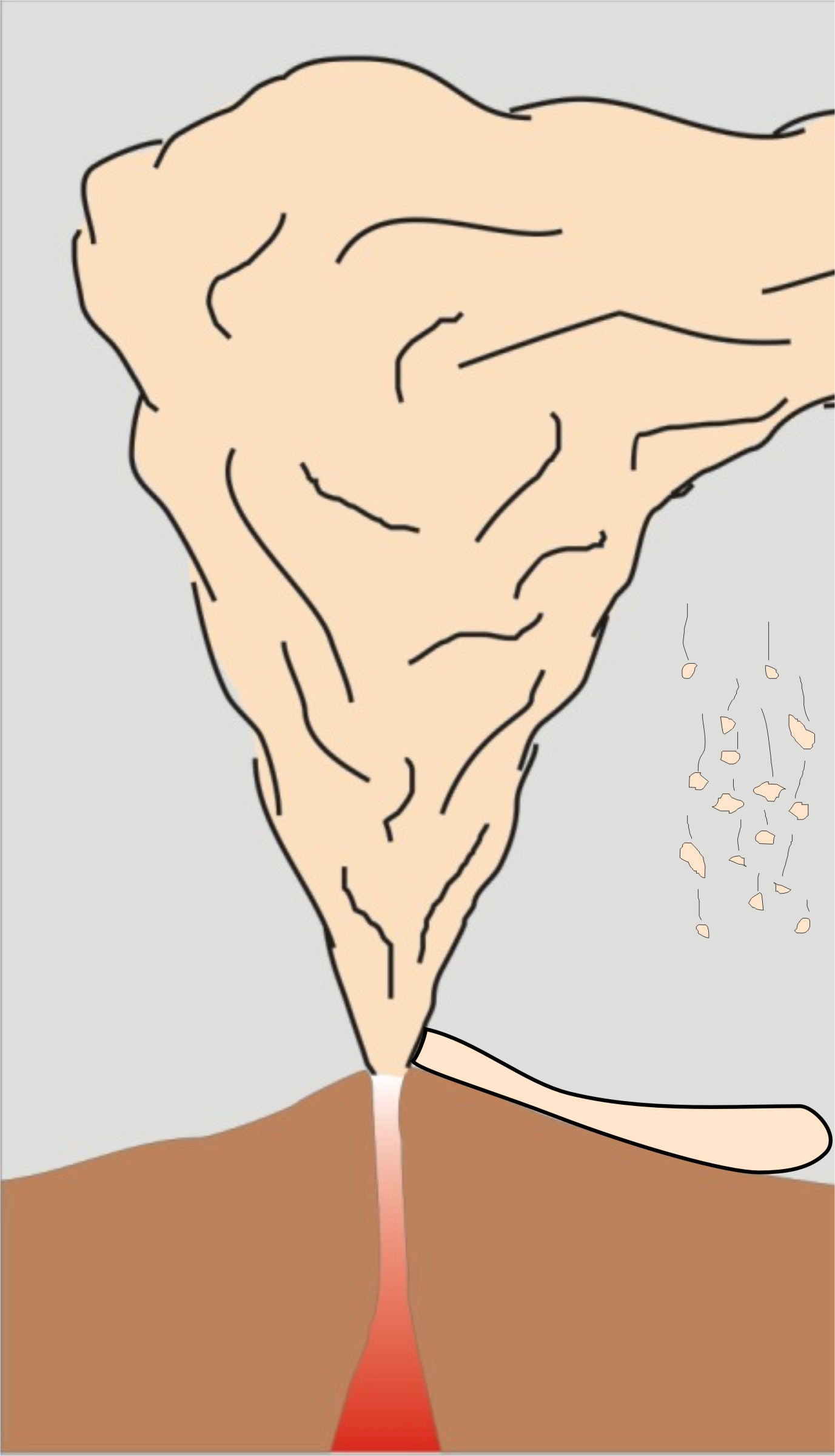
Volcanology is fundamentally the science of volcanoes. Just as the term "physics" can apply to subdisciplines as diverse as solid state physics, cosmology, and, yes, fluid dynamics, volcanology encompasses various aspects of geophysics, petrology, geochemistry, sedimentology and, in recent years, fluid dynamics.
This site focuses on the physical aspects and fluid dynamics of explosive eruptions. However, to better understand these aspects, a primer in basic volcanology is necessary. A proper vocabulary is also useful.
MAGMA -- the multi-phase system of melt and crystals (+/- volatile phase) which can either crystallize at depth, as an intrusion, or erupt from volcanoes as LAVA or PYROCLASTIC rocks
LAVA -- magma erupted effusively (as flows) at the surface; incidentally, "lava" rhymes with "java," not "have a. . ."
PYROCLASTIC ROCKS -- magma erupted explosively at the surface; this is really a catch-all term for pumice, volcanic ash, scoria, and bombs, all of which are discussed in the later section "Magma Rising to the Surface"
PLINIAN ERUPTIONS -- explosive eruptions whose dominant phase is a buoyant column of ash and pumice rising to heights up to 30+ km above sea level; see "Buoyant Regime" and "Neutral Buoyancy and Spreading of Plume"
PYROCLASTIC FLOWS -- pyroclastic density currents formed through non-buoyant behavior/collapse of eruption columns, or collapse of lava domes; these currents flow downhill at speeds of X to Y km/h, and are either dilute (termed pyroclastic surges) or concentrate (termed pyroclastic flows)




